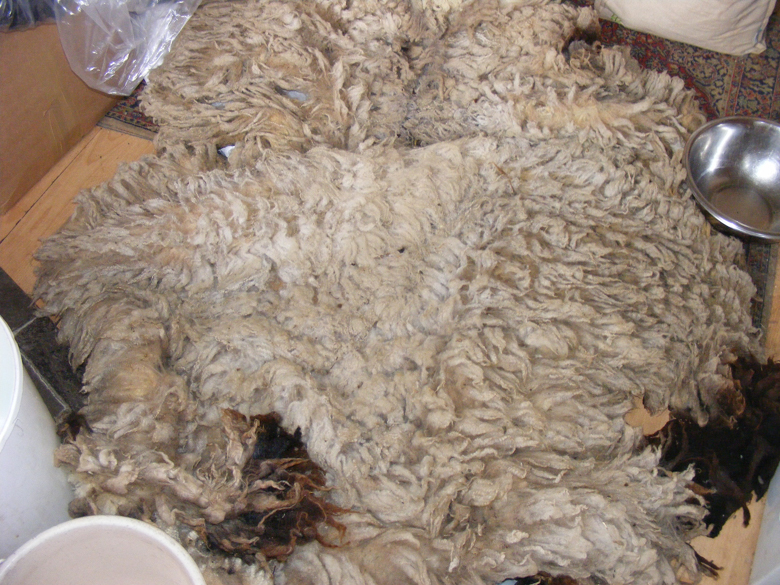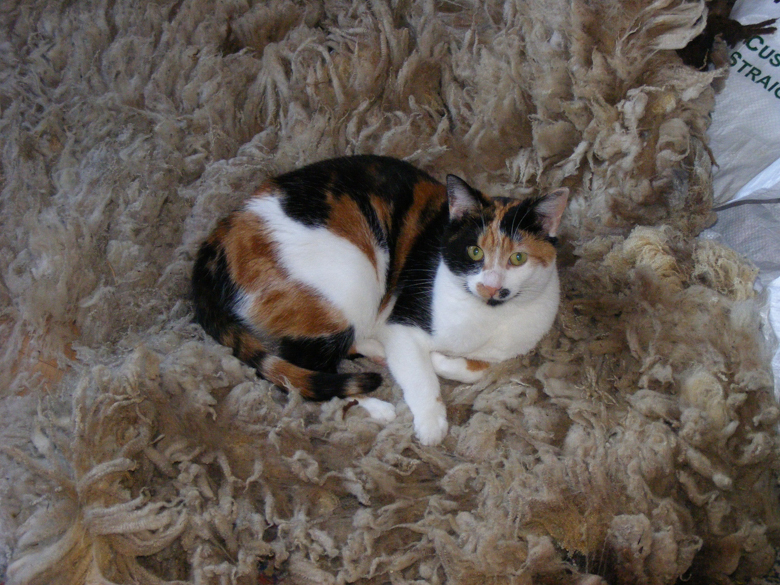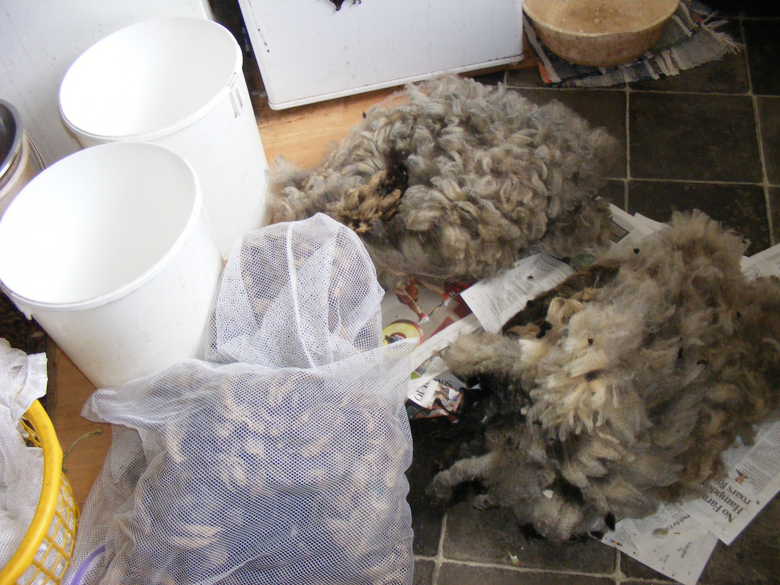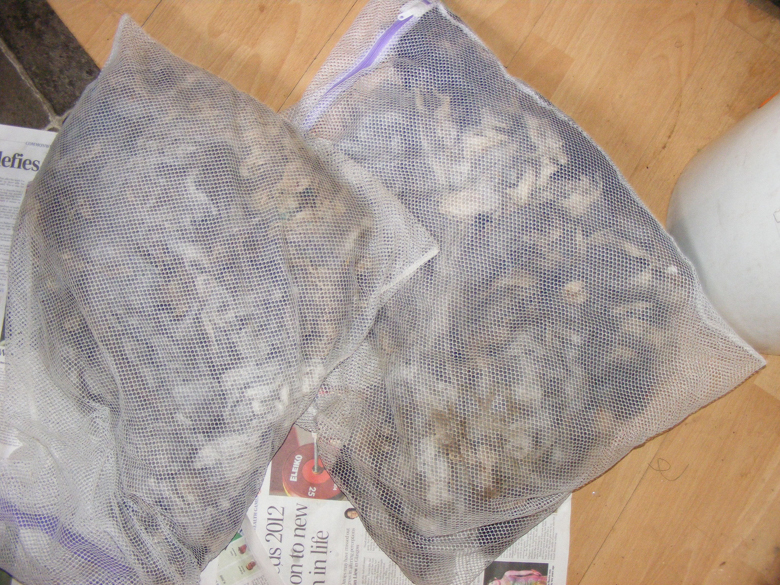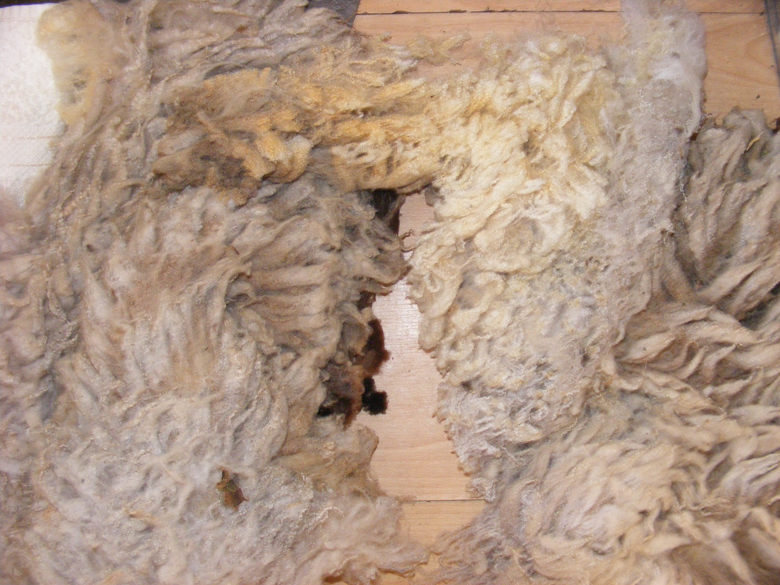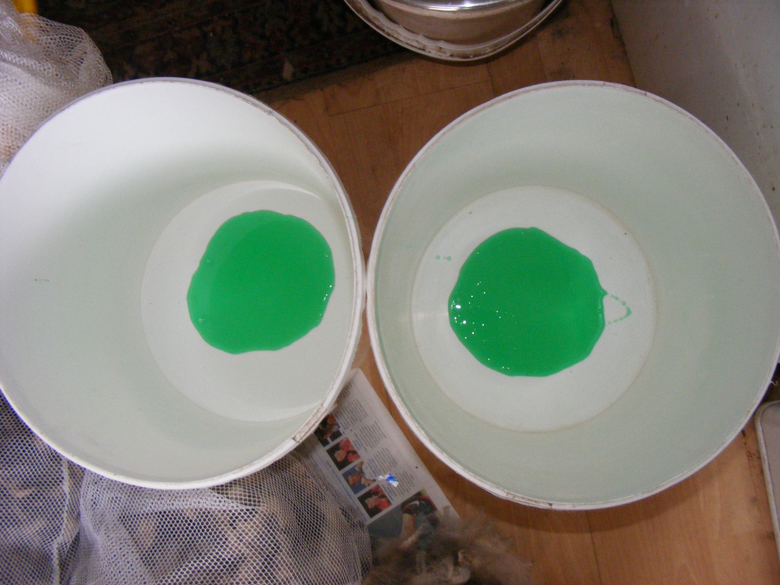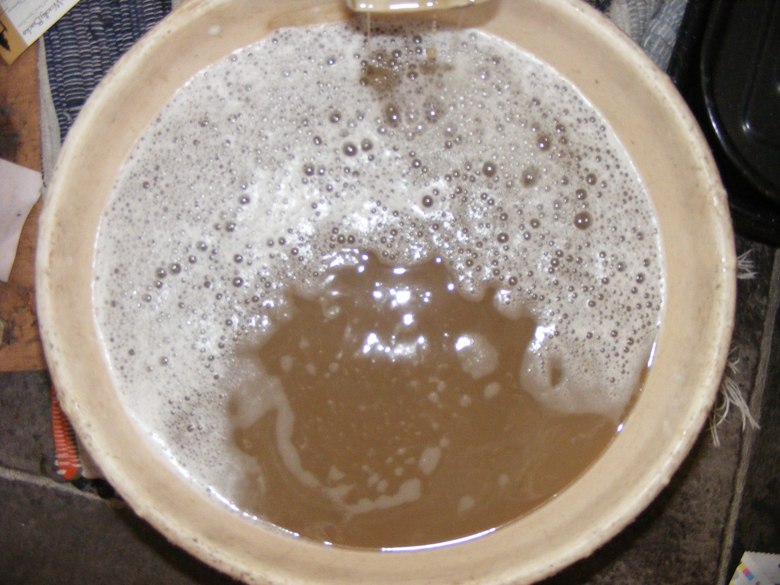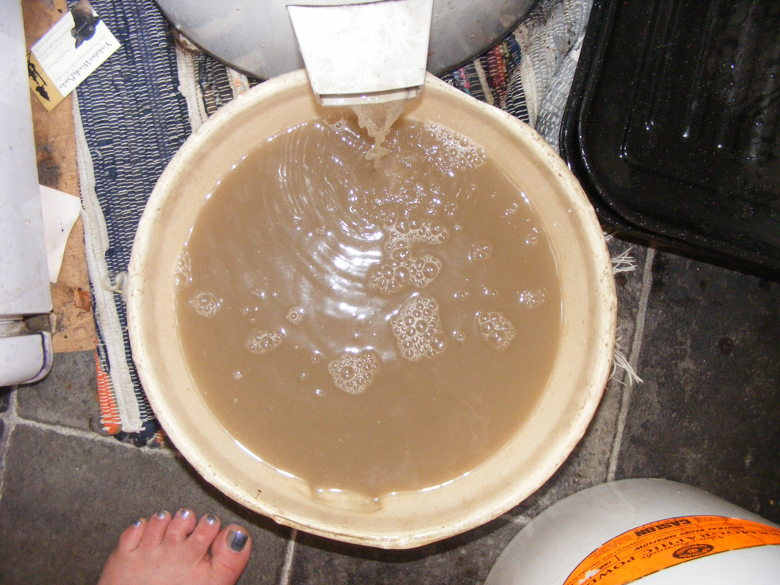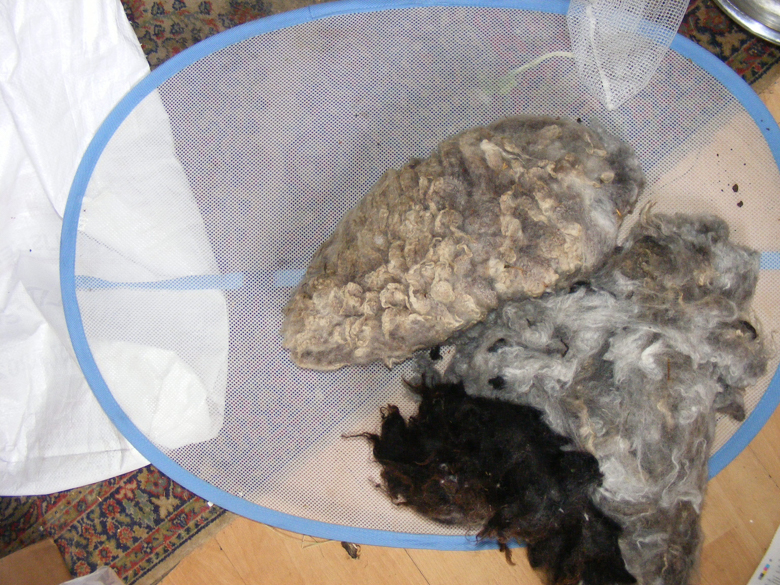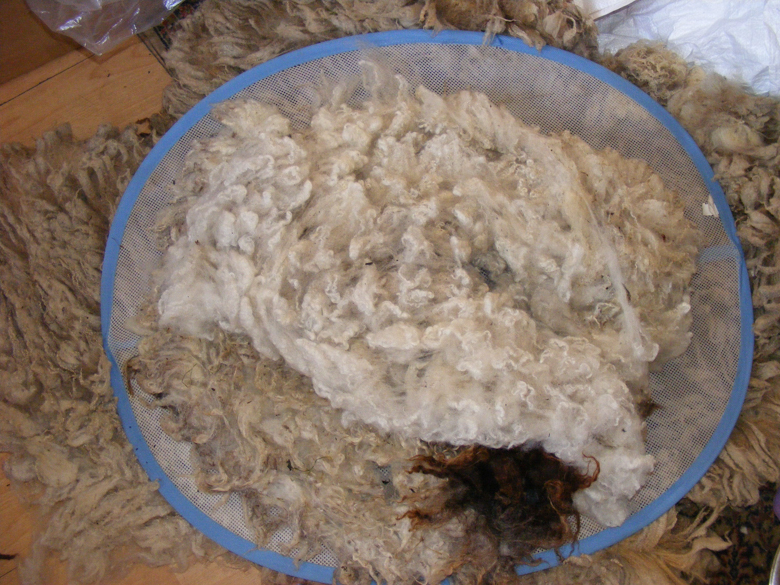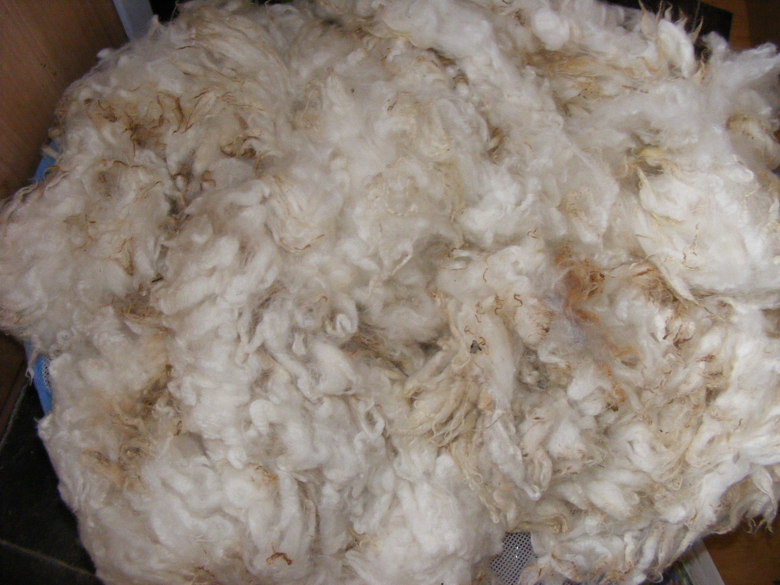Continuing from the wool care posts we did last week, this evening we are joined by Freyalyn who is the amazing force of life and WOOL behind Freyalyn’s Fibres, who shares her method for washing raw fleece.
How *I* wash a fleece.
There are as many ways to wash a fleece as there are breeds of sheep out there in the world; but this is the way I do it. I’ve described and even demonstrated this in workshops, and talked about it to lots of spinners, but this is the first time I’ve attempted to do an illustrated, inclusive version of ‘this is how I wash fleece’.
I’m not saying this is how everyone should wash all fleece – some people find it difficult to wash an entire fleece, some people just don’t want to be involved at this stage and would far rather just buy nice clean pre-processed wool, and some people have their own successful way of doing it. But this works for me, and I get through a lot of fleece in a year. Sadly I don’t get to spin as much of it as I’d like, but I dye and sell lots of fleece (as well as the BFL and other breeds tops I do), and this is how I initially process it all.
My most essential piece of equipment is a small electric spin dryer. I get mine second-hand in a local electrical emporium. They are still available new, and second-hand, sometimes turn up on Ravelry or eBay or any of the Freegle sites. Either way, they allow me to wash even the finest of fleeces with minimal handling, minimal water, and minimal stress.
The other things I need are two largish plastic tubs (they need to be small enough for me to heave about while mostly full of water. I’m quite strong, so they’re bigger than someone else would use), at least four laundry bags (either of the zip up or drawstring variety, 18” 24” wide), thick rubber gloves, and lots of washing up liquid.
You can, of course, use the lovely and efficient fleece-scouring agents you can get these days. I rarely have them in, but find ordinary washing-up-liquid perfectly acceptable. It’s designed to dissolve grease and dirt, which is exactly what I want to remove from the fleece. Entirely up to you whether you get scented stuff or not. (I like Waitrose’s own brand Sensitive).
First things first, spread out your dirty fleece.
This is your opportunity to give it a good looking at, if you didn’t manage to do so when you bought (or were given) it. Give it a very good skirting – by which I mean go round the edges of the fleece, removing felted bits, really grubby bits, bits completely stuck together with seeds and grass. Life is short and wool (even expensive wool) is cheap – there’s more than enough lovely wool in the world to not bother with the grotty stuff.
Then remove the cat from the fleece. Oddly, all my cats have been fascinated with raw fleece, and seem to lose interest once it’s clean and fluffy (only regaining the desire to curl up in it once I’ve spent ages carding or combing it).
It’s usually wise to handle the fleece right from the start with rubber gloves, otherwise if you handle it with bare hands at this stage you’ll only end up with sheepiness on the inside of your rubber gloves, as well as the outside.
Now, divide the fleece up into pieces of a size to fit easily into one of the laundry bags, with enough space to move around but not so much it will move too much and derange the order of the fleece.
This is something that really needs experience to get right. Some fleeces – not too greasy, not too grubby, nice open structure – will wash clean easily while quite packed into the bags. Others, generally the finer and more-lanoliny ones, need more space.
Err of the side of too little rather than too much – if the fleece doesn’t wash out properly because it was too packed, it will only need doing again.
At this point, pay attention to the fleece itself – are some parts much finer than others? If so, try and split the fleece up along the divisions of quality. This is perhaps where you should use bare hands.
Now, put detergent in to the tubs. I usually do two tubs or buckets at the same time – it means I can wash a small fleece in one go, and a big one in two. This is even with the added time-wasting complication of my plumbing at home – the hot water pressure in my kitchen is appallingly low, and it takes far too long to fill even a small bucket with hot water at the kitchen sink. So I fill buckets from the tap in the bath and carry them through to the kitchen (carefully stepping over the dogs and trying not to fall down the stairs while I do it) and fill the tubs – two buckets to each tub. Lots of detergent – you need the hot soapy water to feel slippery between your fingers, so a very generous squeeze of the bottle.
And the water has to be really hot! I mean really hot. Too hot to put your hand in without a strong rubber glove. So be careful filling buckets and tubs – you really don’t want to spill this.
My tubs are big enough to take two bags of fleece each – a small to medium fleece breaks into four bags, so I can do it all in two tubs. Place the bags on the tubs and slowly push them under with gloved hands. A gentle push under it all it needs – the heat and detergent will do the rest.
Go away and leave them for 20 to 30 minutes. It’s important not to leave the fleece in the soapy water for much longer – the hot water and detergent will dissolve the grease out of the wool and keep it in suspension. As the water cools, the lanolin will be redeposited on the wool, in a slightly changed form that is much harder to wash out.
Now, this is when it gets messy. The heavy, dripping bags of hot, wet, dirty wool need to be lifted out of the tubs and into the spin dryer. Get them in there and spin! While they are spinning, pour the remainder of the dirty water out and replace with clean water – the same temperature as the original wash water.
This is what your spun-out soap water will look like:
Shake up the spun-out bags of fleece to loosen it up a little, immerse in the hot clean water, and leave, again for no more than 20 or 30 minutes, then spin out again.
This is the rinse water. It still looks grubby, but there’s very little soap and grease in this water, that was all spun out with the first wash water.
This is what the fleece looks like just tipped out of the laundry bag. If it’s carefully shaken out at this stage, the fleece structure is entirely intact.
This is a multi-coloured Shetland fleece, shaken out and ready to dry. Apart from the odd bit of vegetable matter, it’s perfectly clean and ready to spin straight as is, or to card or comb. The structure is entirely in place, so when you can separate each individual lock or staple-block easily, it’s much easier to process.
This is a cream-coloured Shetland fleece, washed and drying. Some of the tips appear to be a little stuck together and grubby, but this will come out with either a little pinch with the fingers or a quick flick with a comb. Having removed all the grease and stickiness, any remaining dirt will easily fall out.
If I’m planning to dye a fleece, I often don’t even rinse the wool after the initial soapy wash – I lay it straight into the dyepans and pour the dye solution straight over. Spinning the dye solution out will take the last of the soap and dirt with it – and of course my dye solutions are slightly acidic so that acts as an extra conditioner to the wool (wool likes a slightly acidic final rinse, as does human hair!)
So there we are – carefully washed fleece, ready for carding or combing or just spinning as is. But that’s another post!
Thanks to Freyalyn for sharing this useful post on washing fleece! All content © Freyalyn Close-Hainsworth and used with kind permission.
